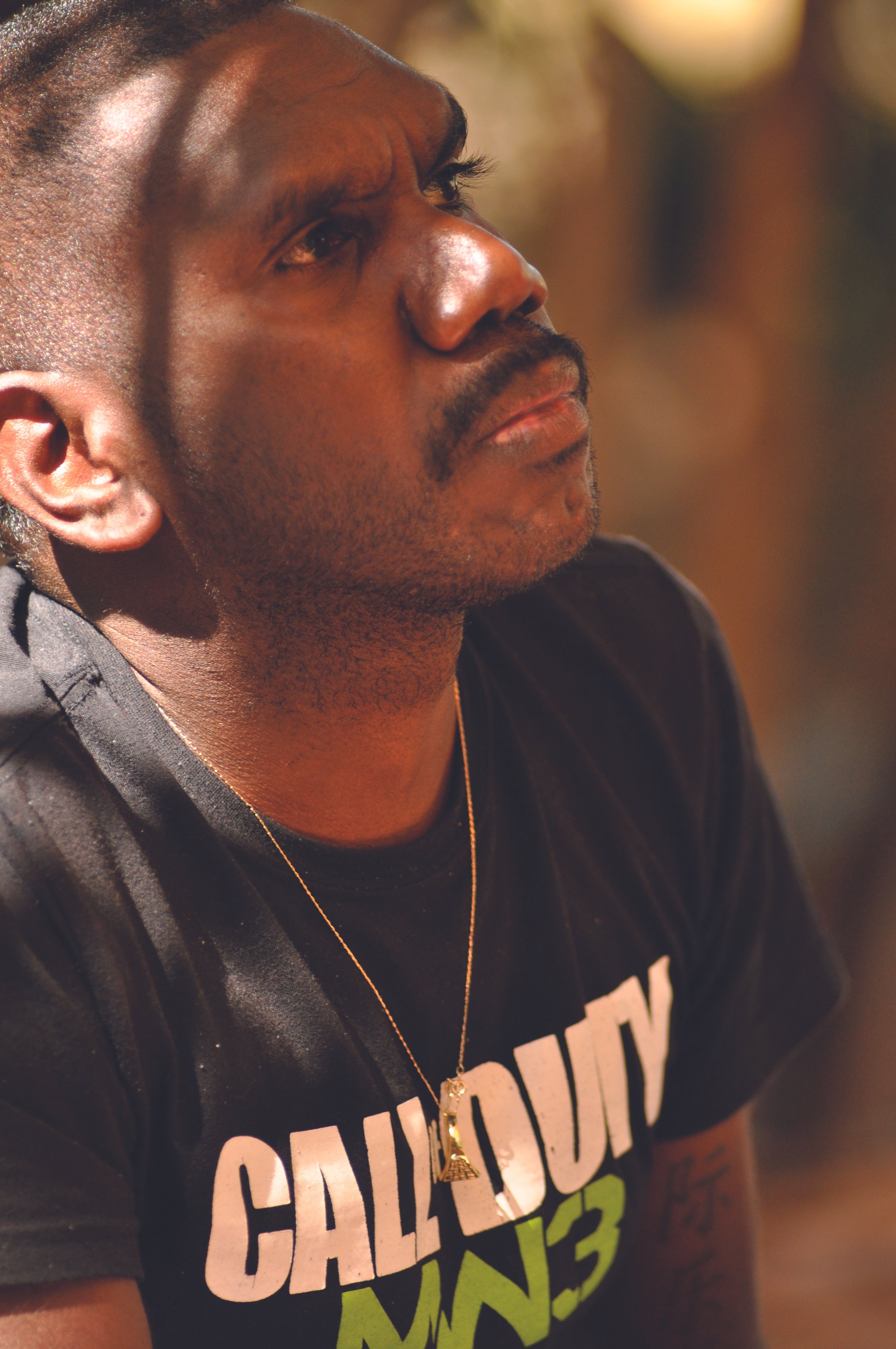DANIEL WALBIDI
BIOGRAPHY

“Art is our voice now” says Daniel Walbidi, a young man of impressive creative power.(McManus, 2008) Born in the remote West Australian community of Bidyadanga (250 km south of Broome) in 1982, he grew up listening to the songs and stories of his elders and, encouraged by his high-school art teacher, revealed a natural talent for their visual rendition. He has become the driving force behind a burgeoning art movement that now provides much of the community’s revenue and, in the wider art world, is their ‘keenly collected star’. (Rothwell, 2008)
In 1999 he approached Broome gallery owner, Emily Rohr, with the idea of starting a painting group. He recognized the need to paint, not only in himself but also amongst his elders, who carried compelling memories of traditional knowledge and the loss of their desert homelands. Severe drought and encroaching mining and grazing developments during the 1960’s had pushed the Yulparija people coastwards. Along with several other desert tribes, they found refuge at Le Grange Mission and settled amongst the Karajarri, the saltwater estuary dwellers at Bidyadanga. In 2002, the Karajarri won a land claim that brought the different strands of cultural identity within the melded community to the fore. With Walbidi at the helm, the Yulparija ‘way of seeing’ took on a new impetus. Sell out shows resulted in Melbourne and Sydney, with some of the seventy and eighty year old leading Bidyadanga artists referring to the determined Walbidi as ‘young-boss’.
Accompanied by a film-maker David Batty, the painting group journeyed to visit their long missed ancestral lands. (Desert Heart, Rebel Films, 2008) Walbidi’s meticulously detailed and abstracted topographies, of once only-imagined places and journeys, noticeably relaxed after this real life encounter. He realized the power and depth of his indigenous inheritance. It is, he said, “…a part of myself. Its not just a story, it’s a living thing.” (Rothwell, 2008) He describes the desert ochres as the warm centre while the coastal turquoise blues and greens provide a contrasting exuberance of life and movement, using familiar yet always striking motifs. Though concerned to keep his culture alive, Walbidi is also inspired by the modern world and contemporary art practises, particularly after a recent trip to London. “We still paint the land,” he says, “but in an evolving way.”
© Adrian Newstead
References
McManus, Briget, “Heart of Our Country” in The Sydney Morning Herald, The Guide, March 17-23, 2008
Rothwell, Nicolas, “Our Old People Need to Paint” in The Australian, January 29, 2008

